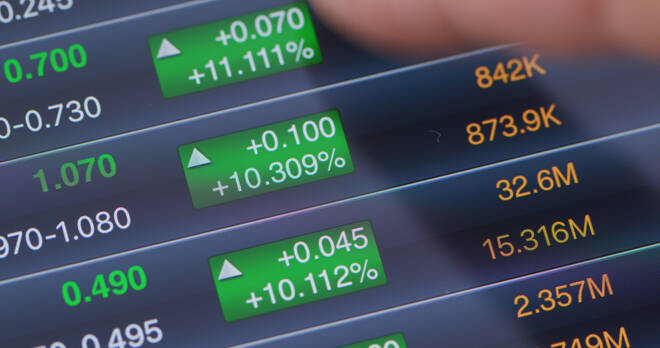Advertisement
Advertisement
Sanofi to Acquire Principia Biopharma for $3.7 billion; Analysts Optimistic on Outlook
By:
Sanofi SA, a French multinational pharmaceutical company headquartered in Paris, said it would acquire a U.S.-based biopharmaceutical company Principia Biopharma for approximately $3.7 billion, sending its shares up about 1%.
Sanofi SA, a French multinational pharmaceutical company headquartered in Paris, said it would acquire a U.S.-based biopharmaceutical company Principia Biopharma for approximately $3.7 billion, sending its shares up about 1%.
Under the terms of the merger agreement, Sanofi will commence a cash tender offer to acquire all outstanding shares of Principia common stock for $100 per share in cash for a total enterprise value of approximately $3.36 billion, the company said.
Sanofi expects to complete the acquisition in the fourth quarter of 2020.
At the time of writing, Sanofi shares traded nearly 1% higher at EUR 86.03 on Monday. The stock is down about 5% so far this year.
On the other hand, Principia Biopharma stock jumped over 11% to $101 in pre-market trading on Monday. The stock is up more than 65% so far this year.
Executives’ comments
“This acquisition advances our ongoing R&D transformation to accelerate the development of the most promising medicines that will address significant patient needs,” Sanofi Chief Executive Paul Hudson said in the statement.
“The merger will provide global resources to get these novel therapies to patients faster,” said Martin Babler, president and chief executive at Principia Biopharma.
Principia Biopharma stock forecast
Six analysts forecast the average price in 12 months at $112.83 with a high forecast of $130.00 and a low forecast of $100.00. The average price target represents a 24.34% increase from the last price of $90.74. All six analysts rated ‘Buy’, according to Tipranks.
SVB Leerink raised price target to $112 from $80 and Guggenheim gave a “Buy” rating and target price of $100.
Sanofi stock forecast
Morgan Stanley target price is EUR 107 with a high of EUR 130 under a bull scenario and EUR 75 under the worst-case scenario. Other equity analysts also recently updated their stock outlook. Independent Research lowered the target price to EUR 105 from EUR 108.00; rated Buy.
Kepler Capital Markets set a EUR 99 price target on Sanofi. The brokerage currently has a buy rating on the stock. UBS Group set a EUR 101 price target and gave the company a buy rating. Goldman Sachs Group set a EUR 105 target price and gave the company a buy rating. At last, Credit Suisse Group set a EUR 105 price objective and gave the company a buy rating.
Analysts’ views
“Principia acquisition makes strategic sense – we estimate implied peak SAR’168 sales of 3-4.5 billion euros,” said Mark D Purcell, equity analyst at Morgan Stanley.
“We value Sanofi using a DCF analysis, which incorporates government bond yield curves and the Sanofi CDS in generating a blended WACC of 6.8%. We assume a progressive return of the ROCE towards the European peer-group average over a 15-year fade period and we use a +1% terminal growth rate,” Morgan Stanley’s Purcell added.
“We reiterate our Buy rating and are increasing our price target to $108 from $77 to what we believe starts to more accurately reflect our initial conservative projections,” said Joseph Pantginis, equity analyst at H.C. Wainwright & Co.
Upside and Downside risks to Sanofi
Upside: Dupixent outperforms expectations, faster R&D turnaround, value-creative M&A, regulatory progress on the Rx-to-OTC switches of Cialis and Tamiflu, COVID-19 pandemic makes flu vaccination a global priority, highlighted by Morgan Stanley.
Downside: Dupixent growth slows as competitors take market share, the pipeline does not deliver (6 focus assets), management fails to turn around R&D and execute on cost-saving, value destructive M&A.
About the Author
Vivek Kumarauthor
Vivek completed his education from the University of Mumbai in Economics and possesses stronghold in writing on stocks, commodities, foreign exchange, and bonds.
Advertisement
